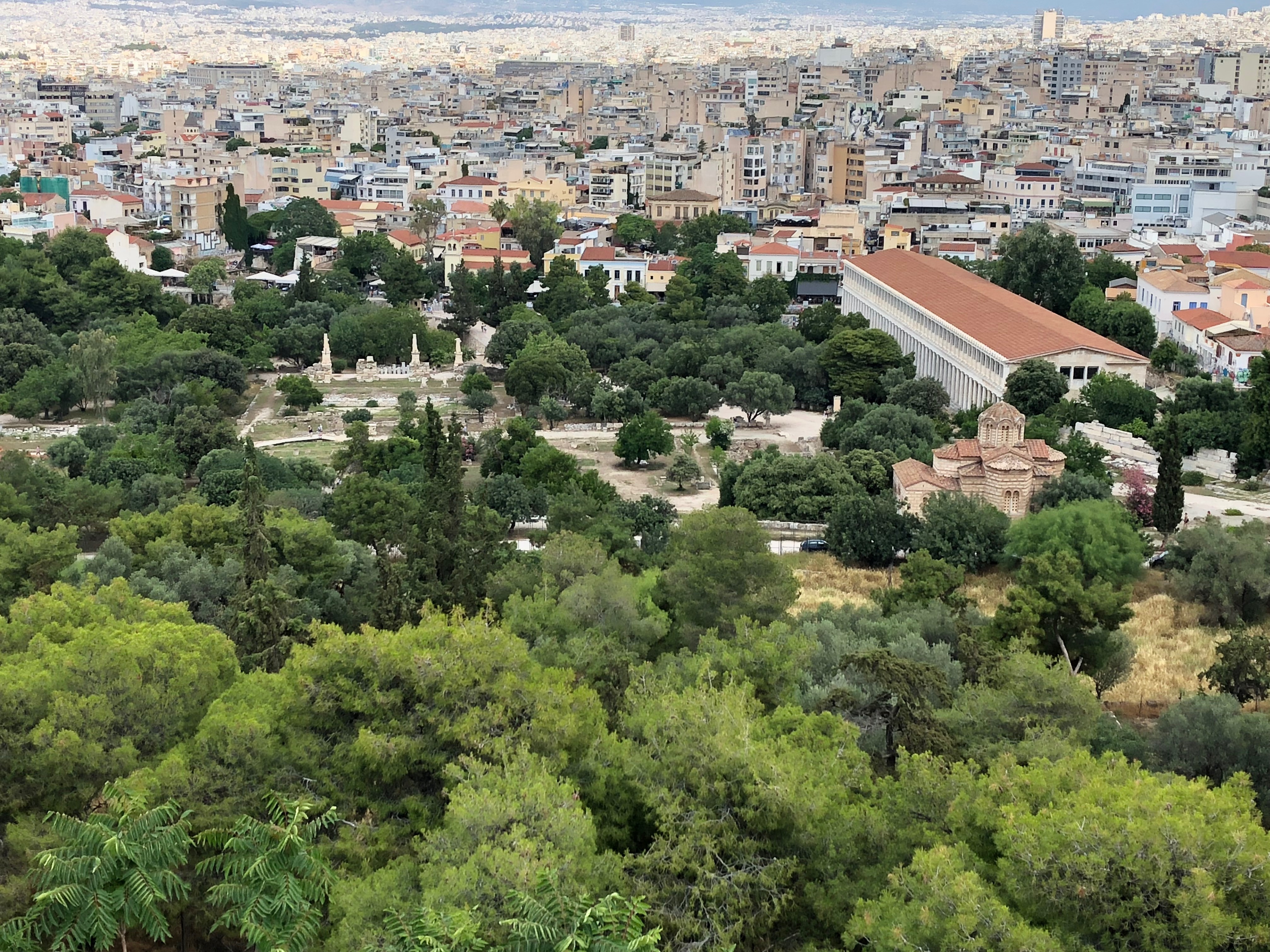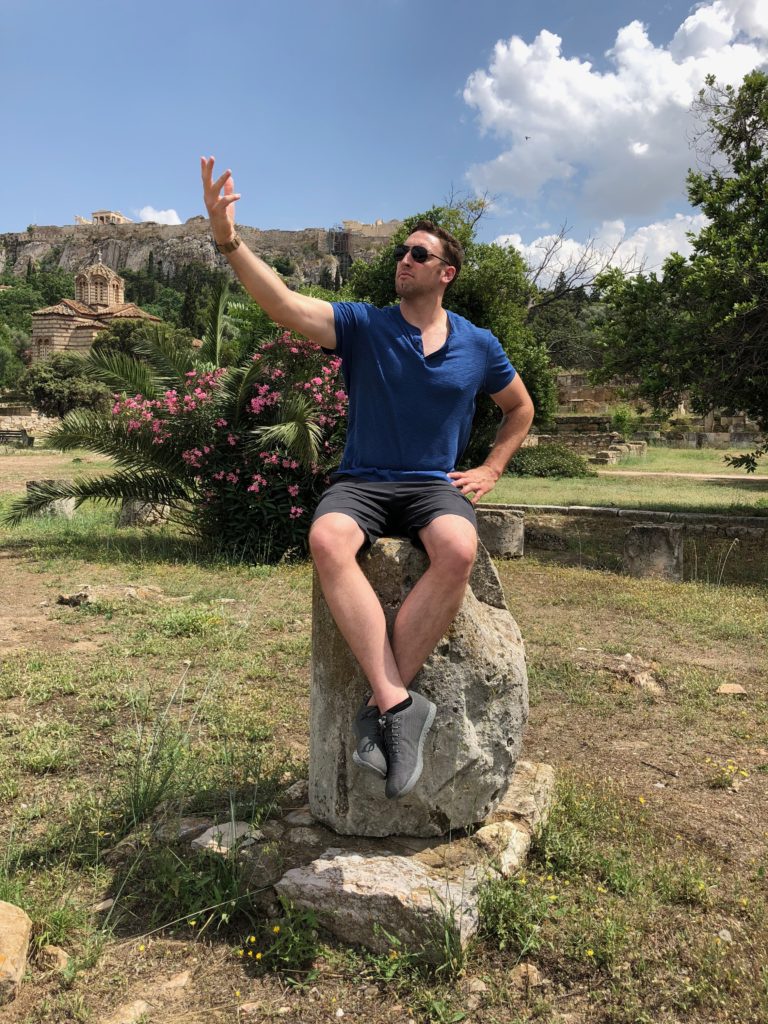It would be a shame if I went to Greece last month and did not post at least some information about my trip. After all it is the nation that birthed the Philosophy according to which I am trying to live. While planning the trip, my wife and I focused mostly on historical sites with me placing special emphasis on battlefields about which I have read so much. Thermopylae and Marathon were high on my list but I realized while we were exploring Athens that I had not really done my research for famous philosophical sites. Thankfully, with some well-placed sign-posts and clever use of Google, we were able to see some of the more important sites in Stoicism.
Historically, Stoicism began in about 300 BC with a man names Zeno of Citium. Most of the details known about his life come from the biography and anecdotes preserved by Diogenes Laërtius in his Lives and Opinions of Eminent Philosophers. Diogenes reports that Zeno’s interest in philosophy began when “he consulted the oracle to know what he should do to attain the best life and that the god’s response was that he should take on the complexion of the dead. Whereupon, perceiving what this meant, he studied ancient authors. One could argue, therefore, that Stoicism began at the Oracle of Delphi. Jenn and I got to visit the Oracle on our trip.


Zeno soon became an acolyte of the ideas of Socrates, and the local philosophers such as Crates the Cynic and others. Gradually, Zeno began to teach his own ideas. He taught at the colonnade in the Agora of Athens known as the Stoa Poikile (Greek Στοὰ Ποικίλη) in 301 BC. His disciples were initially called Zenonians, but eventually, they came to be known as Stoics. As a critical part of our trip, Jenn and I visited the Agora and visited the various Stoa than one can still see. Sadly, the Stoa Poikile is very much gone (and maybe under some buildings) but you can see and sit on several of the other ones in the area.




Generations later, Seneca, Epictetus and Marcus Aurelius would take his teaching and turn them to the Philosophy we know as Stoicism. However, all three were born or lived most of their lives in the Roman empire. But that, as they say, is another story. There were, of course, other sites we visited but those most critical to the Stoic’s beginnings were the Agora, and the Oracle, pictured above.

